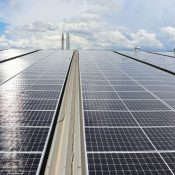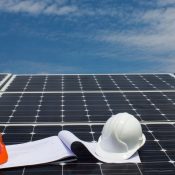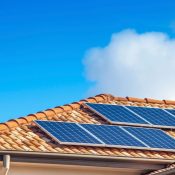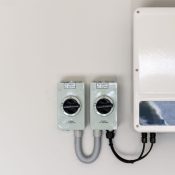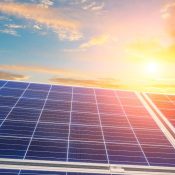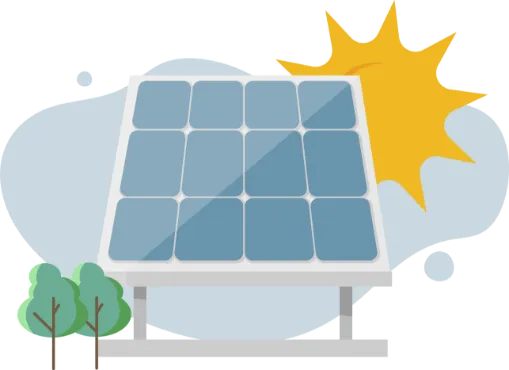Best Roof Angle for Solar Panels
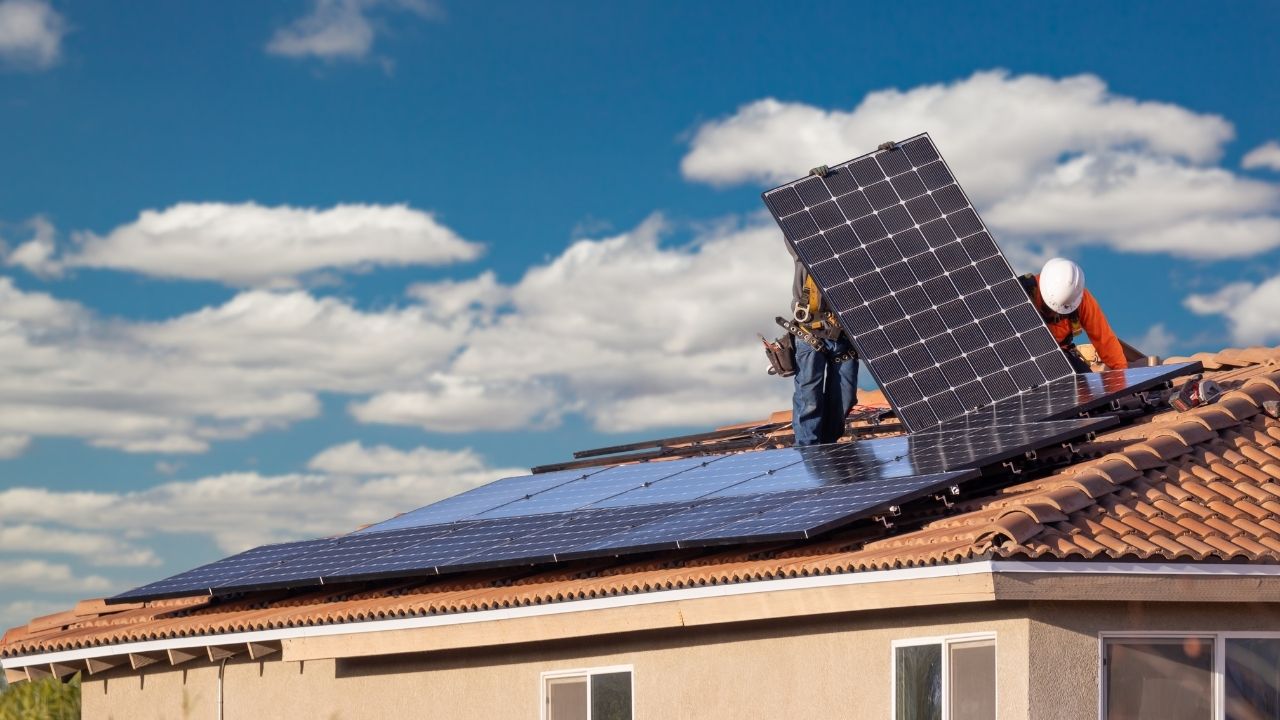
If you’re looking to install solar panels, finding the right roof angle can be a challenge. We’ve faced this same issue and found out that positioning the panels at a certain inclination allows us to make the most of every ray of sunshine.
This blog post will provide you with detailed information on determining the optimal roof angles for solar panel installation, ensuring maximum sunlight exposure and increased energy efficiency.
Ready to harness more power from your solar panels? Let’s dive in!
Key Takeaways
- The optimal angle for solar panels is determined by factors such as latitude, season, roof orientation, obstructions, and roof type.
- Solar panels should be positioned to face true south and set at a tilt angle between 30 and 45 degrees for maximum sunlight exposure.
- Adjusting the panel’s tilt angle based on seasonal changes can optimise energy generation throughout the year.
- Obstacles like trees or buildings can decrease efficiency, so it’s important to assess your rooftop surroundings before installing solar panels.
Determining the Optimal Angle for Solar Panels
To determine the optimal angle for solar panels, several factors need to be considered, such as latitude, season, roof orientation, obstructions, and roof type.
Latitude
We must take note of the latitude when setting up solar panels. Each place on Earth has a different latitude. It tells us how far north or south we are from the equator. For best results, solar panels should match the degree of this location’s latitude.
This angle lets in most sunlight throughout the year. But keep in mind other things too, like climate and energy needs, which can change what angle is best for your roof’s solar panels.
Season
During different seasons, the angle of your solar panels can affect their performance. In the summer months, when the sun is higher in the sky, a lower tilt angle might be more suitable to capture maximum sunlight.
This will allow for increased energy generation during this time. On the other hand, during the winter months when the sun is lower in the sky, a steeper tilt angle can help optimise energy generation by allowing more direct sunlight to hit the panels.
So adjusting your panel’s angle based on seasonal changes can help you maximise your solar energy production throughout the year and make sure you’re getting the most out of your system.
Roof Orientation
Positioning the solar panels on your roof in the right direction is crucial for maximising their energy generation. For optimum results, it is recommended to have the panels face true south.
This means that they should be oriented towards the sun’s path from sunrise to sunset. By doing so, you ensure that your panels receive maximum sunlight throughout the day. Additionally, setting a tilt angle between 30 and 45 degrees will further enhance their performance.
The orientation of your roof plays a vital role in determining how effectively your solar panels can capture sunlight and convert it into usable electricity. So, when installing solar panels, make sure to consider their placement and angle based on the orientation of your roof.
Obstructions
Obstructions on or around your roof can affect the optimal angle for solar panels. It’s important to consider any trees, buildings, or other structures that may cast shadows and block sunlight from reaching the panels.
These obstructions can reduce the efficiency of your solar panel system and decrease energy generation. To determine the best angle for your panels, assess your rooftop surroundings and make adjustments accordingly.
By ensuring that there are no significant obstacles in the way, you can maximise sunlight exposure and optimise the performance of your solar panels throughout the year.
Roof Type
Different types of roofs can affect the optimal angle for solar panels. Flat roofs allow for more flexibility in terms of tilt angle, but a south-facing tilt of 30 to 40 degrees is generally considered ideal for maximising sunlight capture.
Low-pitched roofs may require additional mounting hardware to achieve the desired tilt angle. High-pitched roofs, on the other hand, may have angles that are already close to the recommended range.
When considering the best roof angle for solar panels, it’s important to take into account the specific characteristics and suitability of your roof type.
Importance of Roof Angles for Solar Panels
The roof angle plays a crucial role in the performance of solar panels as it affects their energy efficiency, cost savings, and lifespan.
Increased Energy Efficiency
To maximise the energy efficiency of your solar panels, it’s important to consider the angle at which they are installed on your roof. By positioning them correctly, you can capture more sunlight and generate more electricity.
Studies show that setting the tilt angle of solar panels equal to the latitude of your location is a good starting point. However, this is not the only consideration. For example, in Ireland, setting the panel’s tilt between 30 and 45 degrees will yield optimal results in terms of energy generation.
It’s also worth noting that solar panels are most efficient when they receive sunlight at a 90-degree angle. Setting their angle at around 30 degrees achieves this, maximising efficiency and energy production.
So when installing solar panels on your roof, make sure to select an appropriate tilt angle for increased energy efficiency.
Cost Savings
Choosing the right angle for your solar panels can lead to significant cost savings. When positioned at the optimal angle, solar panels can generate more electricity, which means you’ll need to rely less on traditional energy sources.
This can result in lower monthly electricity bills and long-term savings. By maximising sunlight capture with the correct tilt angle, your solar panel system will be more efficient and able to produce more energy throughout the year.
This not only reduces your carbon footprint but also helps you save money on utility expenses. So, by considering factors like roof orientation and latitude when determining your roof’s angle for solar panels, you can enjoy both environmental and financial advantages.
Extended Lifespan
Solar panels have an extended lifespan when they are installed at the optimal roof angle. By positioning the panels at the right tilt, you can prevent damage caused by harsh weather conditions and ensure their durability over time.
Additionally, the correct angle allows for proper sunlight absorption, maximising energy production and efficiency. This not only saves you money on your electricity bills but also reduces maintenance costs in the long run.
So, choosing the best roof angle for your solar panels is crucial for their extended lifespan and overall performance.
The Best Roof Angle for Different Types of Roofs
When it comes to flat roofs, a low-pitched roof is ideal for solar panel installation as it allows maximum sunlight exposure throughout the year. For high-pitched roofs, a steeper angle is recommended to ensure optimal energy efficiency and performance of the panels.
Flat Roofs
For flat roofs, the ideal tilt angle for solar panels is between 30 and 40 degrees if they face south. This setup allows them to capture the maximum amount of sunlight throughout the day.
Adjusting the panels to a steeper angle, around 60 degrees, can help optimise energy generation during different seasons. It’s important to consider factors like climate, desired energy output, and specific system needs when determining the best roof angle for solar panels on flat roofs.
By finding the right tilt angle, homeowners in Ireland can maximise their solar panel’s efficiency and energy production.
Low-Pitched Roofs
For low-pitched roofs, the best angle for solar panels is between 10 and 20 degrees. This tilt allows the panels to capture maximum sunlight throughout the day. With this angle, the rays from the sun hit the panels at a near 90-degree angle, making them more efficient at generating electricity.
Adjusting the tilt to a steeper angle, around 30 degrees, can help counteract any seasonal variations and optimise energy generation throughout the year. When considering installing solar panels on low-pitched roofs, it’s important to find a contractor who understands how to position and adjust them for maximum performance based on factors like climate, desired energy output, and specific system needs.
High-Pitched Roofs
For high-pitched roofs, the optimal tilt angle for solar panels is typically around 30 to 40 degrees. This angle allows the panels to capture maximum sunlight throughout the day. By positioning the panels at this angle, homeowners can ensure that their solar panel system operates efficiently and generates more energy.
It’s important to note that this tilt angle may need adjustment depending on other factors, such as climate and desired energy output. Overall, a high-pitched roof offers great potential for harnessing solar energy effectively and reducing electricity costs.
Ready to Optimise Your Solar Setup? Find the Perfect Roof Angle Today!
In conclusion, finding the right roof angle for your solar panels is crucial for maximising energy efficiency and cost savings. By considering factors such as latitude, season, roof orientation, obstructions, and roof type, you can determine the optimal tilt angle for your panels.
However, remember to adjust the angle throughout the year to ensure maximum sunlight exposure. So make sure to do your research and consult with professionals to find the best roof angle that suits your needs and location.
Planning a switch to solar energy?
Contact Going Solar now and Get Free Advice & Quote Within Minutes!
Frequently Asked Questions
Contact Going Solar Now!
Joe Brennan
Founder @ Going Solar
Joe Brennan, the founder of Going Solar, is dedicated to making solar power mainstream in Ireland and meet SEAI objectives. With a focus on affordability and sustainability, he is bringing renewable energy solutions to homes, reducing costs & environmental impact.
Recent Posts

